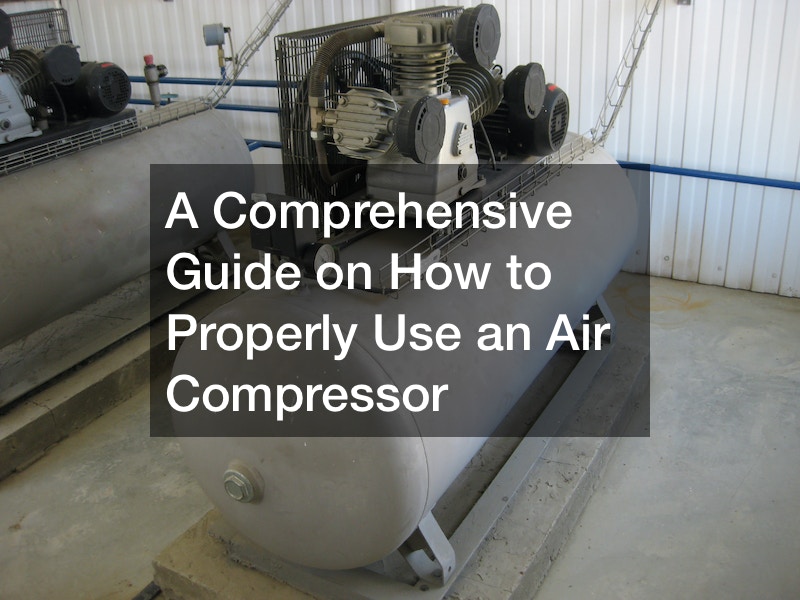How to Get Help Paying for a New Roof, Repair, or Renovation
Introduction
1. What are the available options for financial assistance?

When it comes to getting help paying for a new roof, repair, or renovation, there are various options available for financial assistance. Government grants, home improvement loans, insurance coverage, crowdfunding, non-profit organizations, local government programs, energy-efficient financing, home equity loans, payment plans, and tax credits are all potential resources to explore. Government grants can be a valuable source of funding for roof repairs or replacements. These grants are typically offered at the federal, state, and local levels and may have specific eligibility requirements and application processes. Home improvement loans are another option to consider, providing a lump sum of money to cover the cost of a new roof. Insurance coverage, such as homeowner’s insurance or roof insurance endorsements, can also help alleviate the financial burden of roof repairs. This may apply to any equipment rental, too. Door repairs, car windshield replacements, or any services offered by general contractor or custom home builders or glass cleaning companies may also be eligible.
Before seeking financial assistance for a new roof, it’s essential to determine the cost of the project. Several factors can influence the total cost, including the size and material of the roof, labor costs, additional repairs, permits, roof slope, removal of the old roof, location, accessibility, contractor fees, warranty, and contingency funds. By carefully evaluating these factors, you can create a budget estimate for the project. This can help you in the event of needing emergency plumbing services, plumbing installations, emergency janitor services, or electric fireplace services.
1.1 Government grants
Government grants are financial assistance provided by federal, state, or local governments to help individuals or organizations cover the cost of certain projects, including roof repairs or replacements. These grants may have specific eligibility requirements, documentation needed for application, and limitations on the use of funds. It’s important to research available grants and determine if you meet the criteria before applying.
1.2 Home improvement loans
Home improvement loans are loans specifically designed to finance renovation projects, including roof repairs or replacements. These loans may be secured or unsecured, with interest rates and terms varying based on the lender. Applicants typically need to have a good credit score, stable income, and meet other financial criteria to qualify for a home improvement loan.
1.3 Insurance coverage
Insurance coverage, such as homeowner’s insurance, can help cover the cost of roof repairs or replacements if the damage is caused by a covered peril. Policyholders should review their insurance policy to understand what types of damage are included in their coverage. Roof insurance endorsements may offer additional protection specifically for roof-related issues.
2. How to determine the cost of a new roof?
Before seeking financial assistance for a new roof, it’s essential to determine the cost of the project. Several factors can influence the total cost, including the size and material of the roof, labor costs, additional repairs, permits, roof slope, removal of the old roof, location, accessibility, contractor fees, warranty, and contingency funds. By carefully evaluating these factors, you can create a budget estimate for the project. This can help you in the event of needing emergency plumbing services, plumbing installations, emergency janitor services, or electric fireplace services.
2.1 Roof size and material
The size and material of the roof are significant factors that impact the cost of a new roof. Larger roofs and more expensive materials, such as metal or slate, will typically result in higher costs. On the other hand, smaller roofs and more affordable materials, such as asphalt shingles, may be more cost-effective options for homeowners.
2.2 Labor costs
Labor costs for a new roof can vary depending on the complexity of the project, the contractor’s rates, and the local market. Highly skilled roofers may charge more for their services, but their expertise can ensure a high-quality installation. It’s essential to obtain multiple quotes from reputable contractors to compare labor costs and find the best value for your investment.
Before seeking financial assistance for a new roof, it’s essential to determine the cost of the project. Several factors can influence the total cost, including the size and material of the roof, labor costs, additional repairs, permits, roof slope, removal of the old roof, location, accessibility, contractor fees, warranty, and contingency funds. By carefully evaluating these factors, you can create a budget estimate for the project. This can help you in the event of needing emergency plumbing services, plumbing installations, emergency janitor services, or electric fireplace services.
2.3 Additional repairs needed
In some cases, a new roof may require additional repairs, such as replacing damaged decking or addressing structural issues. These repairs can add to the overall cost of the project and should be factored into your budget estimate. A thorough inspection of the roof by a qualified professional can help identify any underlying problems that need to be addressed during the installation.
3. Are there any government grants available for roof repairs?

Government grants can be a valuable resource for homeowners seeking assistance with roof repairs. Federal programs, state assistance, and local grants may be available to help cover the cost of necessary repairs or replacements. Eligibility requirements, application processes, grant amount limits, documentation needed, approval timeframes, and restrictions on the use of funds vary by program.
3.1 Federal programs
Federal programs, such as the Department of Housing and Urban Development (HUD) grants, may offer funding for low-income homeowners in need of critical home repairs, including roof replacements. These programs typically have strict eligibility criteria and require applicants to demonstrate financial need and the urgency of the repairs.
3.2 State assistance
Many states offer assistance programs for homeowners facing roof repairs or replacements. These programs may provide grants, loans, or tax credits to help cover the cost of the project. State assistance programs often have specific eligibility requirements, application processes, and funding limitations that applicants must meet to qualify for financial help.
Before seeking financial assistance for a new roof, it’s essential to determine the cost of the project. Several factors can influence the total cost, including the size and material of the roof, labor costs, additional repairs, permits, roof slope, removal of the old roof, location, accessibility, contractor fees, warranty, and contingency funds. By carefully evaluating these factors, you can create a budget estimate for the project. This can help you in the event of needing emergency plumbing services, plumbing installations, emergency janitor services, or electric fireplace services.
3.3 Local grants
Local governments and municipalities may also have grants available to assist homeowners with roof repairs or replacements. These grants are typically focused on addressing housing issues within the community and may have specific criteria for eligibility. Local grants can be a valuable resource for homeowners who are unable to secure funding through other means.
Before seeking financial assistance for a new roof, it’s essential to determine the cost of the project. Several factors can influence the total cost, including the size and material of the roof, labor costs, additional repairs, permits, roof slope, removal of the old roof, location, accessibility, contractor fees, warranty, and contingency funds. By carefully evaluating these factors, you can create a budget estimate for the project. This can help you in the event of needing emergency plumbing services, plumbing installations, emergency janitor services, or electric fireplace services.
4. How do you qualify for a home improvement loan?
Home improvement loans can provide homeowners with the financial resources needed to complete a new roof installation or repair project. Qualifying for a home improvement loan typically requires meeting certain criteria, such as credit score requirements, income verification, debt-to-income ratio, collateral options, interest rates, application process, approval timeframe, loan disbursement, and repayment options.
4.1 Credit score requirements
Lenders often require a minimum credit score to qualify for a home improvement loan. A higher credit score demonstrates a borrower’s ability to manage debt responsibly and may result in more favorable loan terms, such as lower interest rates. Applicants with lower credit scores may still be eligible for a home improvement loan but may face higher interest rates or less favorable terms.
4.2 Income and employment verification
To qualify for a home improvement loan, applicants typically need to provide proof of income and stable employment. Lenders use this information to assess a borrower’s ability to repay the loan on time. Income verification may include pay stubs, tax returns, or bank statements, while employment verification may involve contacting the borrower’s employer directly.
4.3 Debt-to-income ratio
Lenders evaluate a borrower’s debt-to-income ratio to determine their ability to manage additional debt from a home improvement loan. A lower debt-to-income ratio indicates that a borrower has sufficient income to cover their existing debts and the proposed loan payment. Lenders may have specific debt-to-income ratio requirements that applicants must meet to qualify for a loan.
5. What types of insurance coverage can help with roof repairs?

Insurance coverage can play a crucial role in covering the cost of roof repairs or replacements. Homeowner’s insurance, roof insurance endorsements, flood insurance, windstorm insurance, hail damage insurance, natural disaster coverage, routine maintenance coverage, claims process, policy limits, deductibles, and out-of-pocket costs are all factors to consider when determining how insurance can help with roof repairs.
Before seeking financial assistance for a new roof, it’s essential to determine the cost of the project. Several factors can influence the total cost, including the size and material of the roof, labor costs, additional repairs, permits, roof slope, removal of the old roof, location, accessibility, contractor fees, warranty, and contingency funds. By carefully evaluating these factors, you can create a budget estimate for the project. This can help you in the event of needing emergency plumbing services, plumbing installations, emergency janitor services, or electric fireplace services.
5.1 Homeowner’s insurance
Homeowner’s insurance typically provides coverage for damage caused by covered perils, such as fire, theft, or vandalism. Many homeowner’s insurance policies also include coverage for damage to the roof caused by severe weather, falling trees, or other unforeseen events. Policyholders should review their insurance policy to understand what types of roof damage are covered and any limitations or exclusions that may apply.
5.2 Roof insurance endorsements
In addition to basic homeowner’s insurance coverage, homeowners may choose to purchase roof insurance endorsements to provide additional protection for their roof. These endorsements can cover specific types of damage, such as leaks, hail, or windstorms, that may not be included in a standard homeowner’s policy. Roof insurance endorsements can offer peace of mind and financial protection against costly roof repairs.
Before seeking financial assistance for a new roof, it’s essential to determine the cost of the project. Several factors can influence the total cost, including the size and material of the roof, labor costs, additional repairs, permits, roof slope, removal of the old roof, location, accessibility, contractor fees, warranty, and contingency funds. By carefully evaluating these factors, you can create a budget estimate for the project. This can help you in the event of needing emergency plumbing services, plumbing installations, emergency janitor services, or electric fireplace services.
5.3 Flood insurance
Flood insurance is a separate policy that homeowners can purchase to protect their property from water damage caused by floods. Flood insurance typically covers damage to the structure of the home, including the roof, as well as personal belongings. Homeowners in flood-prone areas may be required to carry flood insurance from their lender or receive financial assistance from the government to mitigate flood risks.



